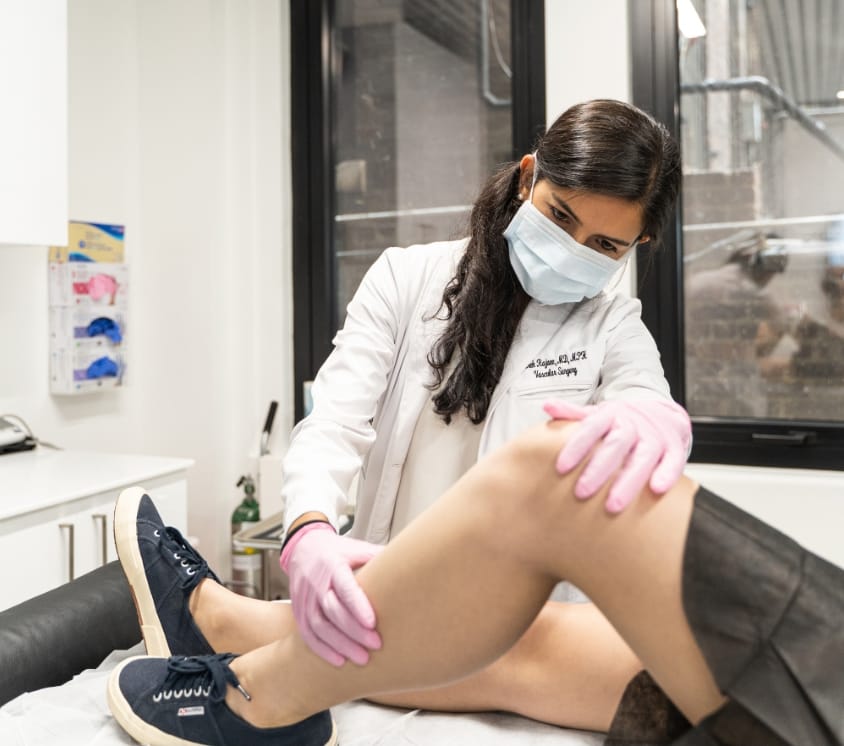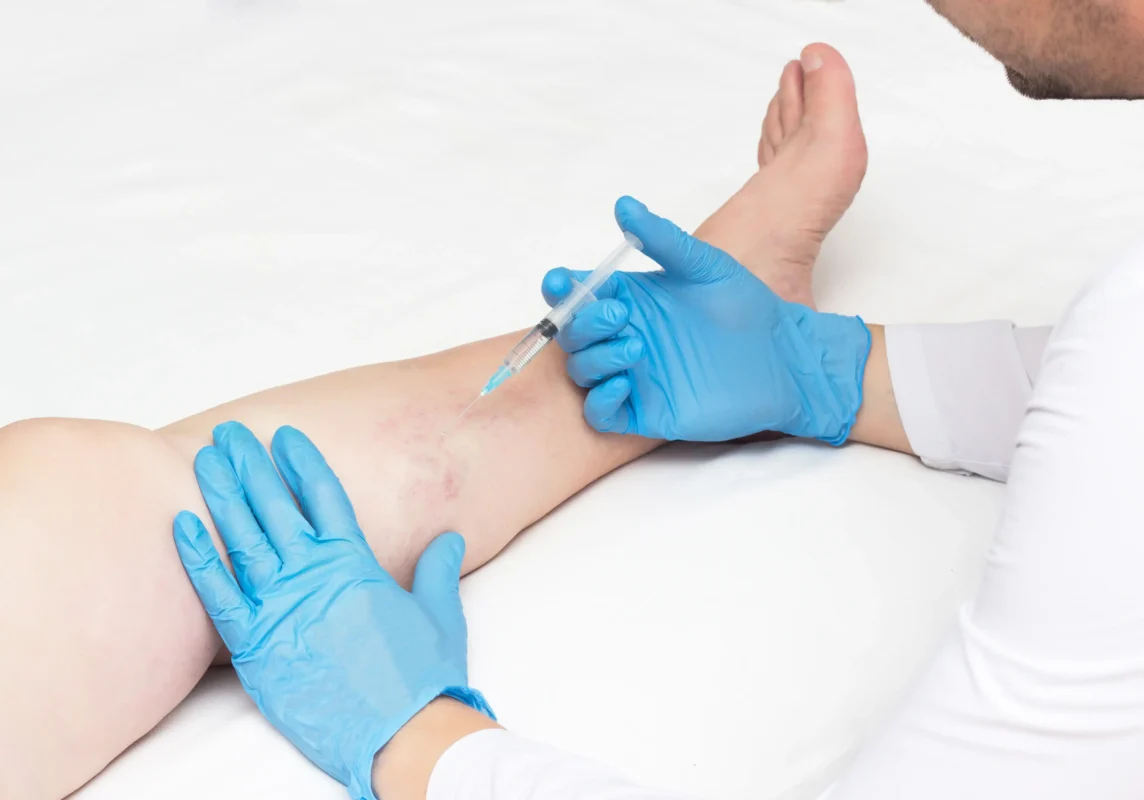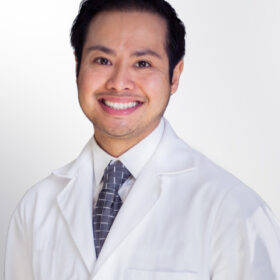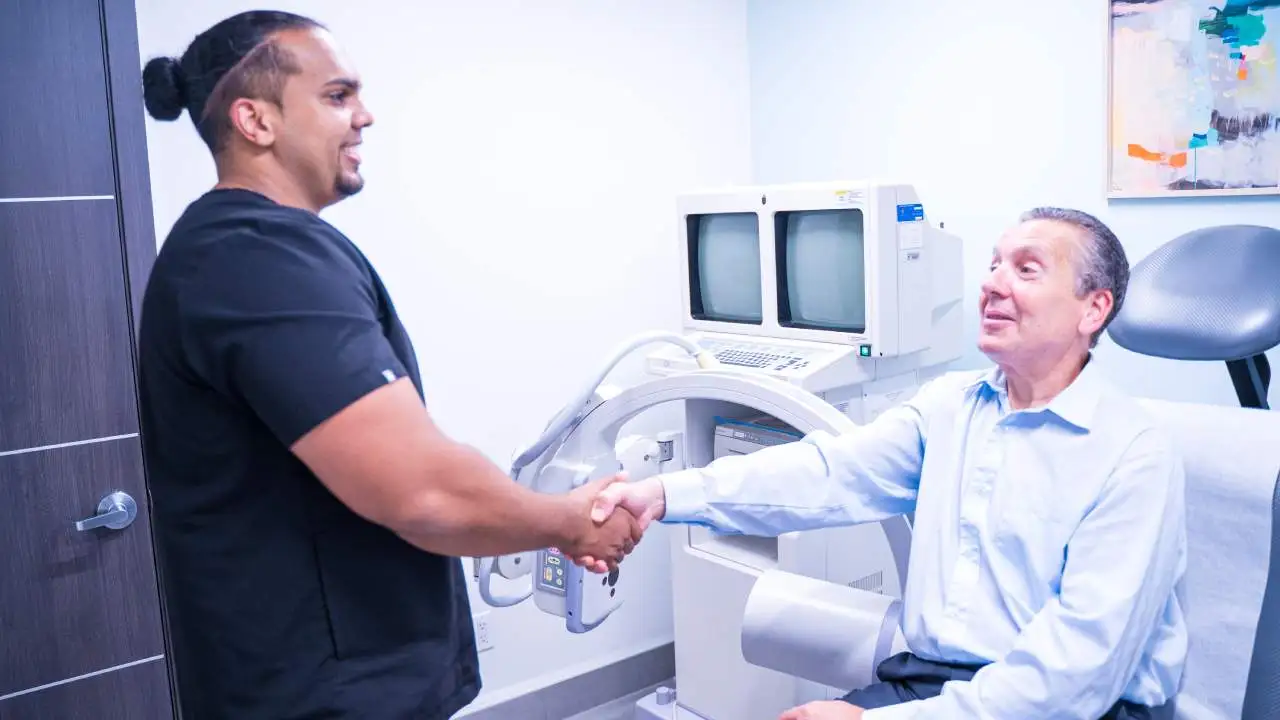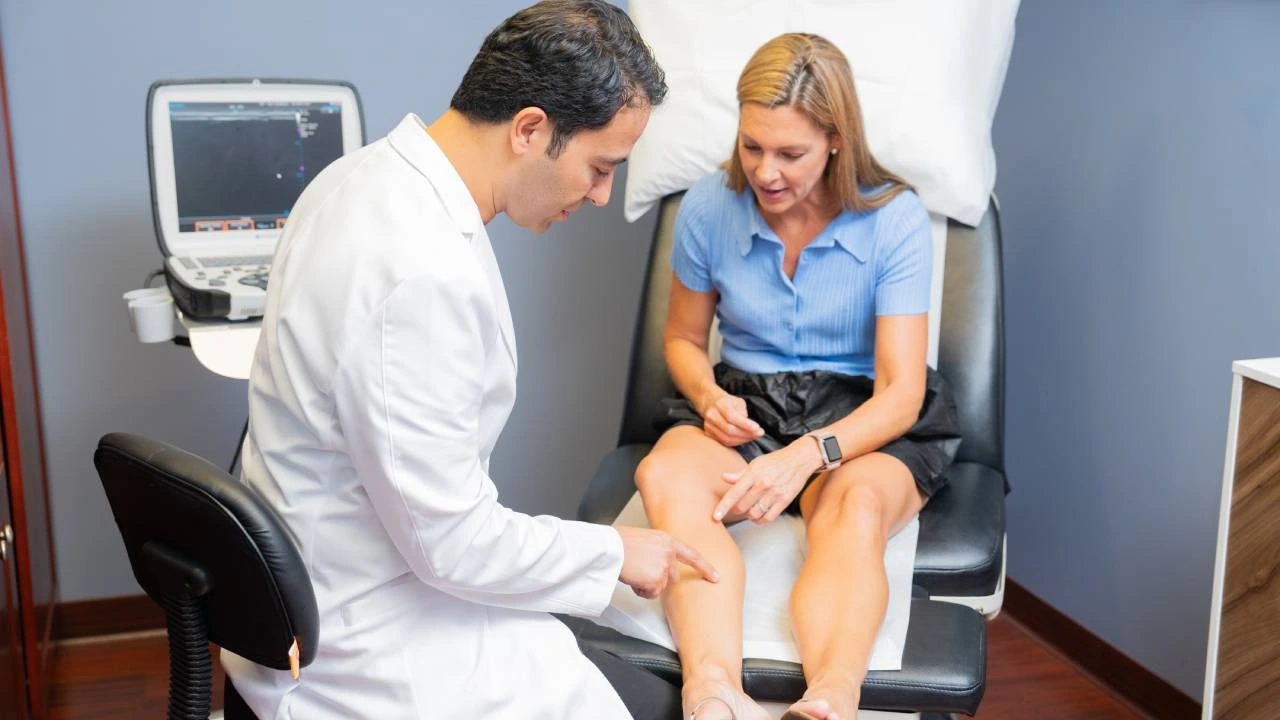Chronic venous insufficiency: the underlying root cause of varicose veins and spider veins
What is the main cause of varicose veins? Patients who notice thick ropes of twisted, knotted, and tangled blood vessels in the legs and feet often wonder why they’re developing varicose veins. Varicose veins are damaged blood vessels with a high volume of accumulated blood. But the primary root cause of varicose veins is a medical condition known as insuficiencia venosa crónica, which can lead to poor blood circulation and the formation of numerous vein problems, such as spider veins, varicose veins, and leg cramps.

Chronic venous insufficiency is a circulatory disorder caused by the collapse of vein valves. In healthy veins, the valves act as one-way doors that allow smooth, one-way blood circulation to the heart against the force of gravity. When your vein valves malfunction, gravity forces blood to flow backward and accumulate in the leg veins. The continued accumulation of blood in leg veins leads to increased vascular dilation, which leads to visible spider veins and protruding varicose veins in the legs and feet.
The best way to treat varicose veins permanently is to identify and treat underlying vein disease. Inexperienced vein doctors remove varicose veins without addressing the root cause, leading to a high risk of varicose vein recurrence. Vein Treatment Clinic is led by board-certified vein doctors who perform comprehensive and personalized vein treatments. Our vein doctors thoroughly diagnose the root cause of your vein problems, following which they curate a personalized vein treatment plan, ensuring safe, consistent, and long-lasting results.
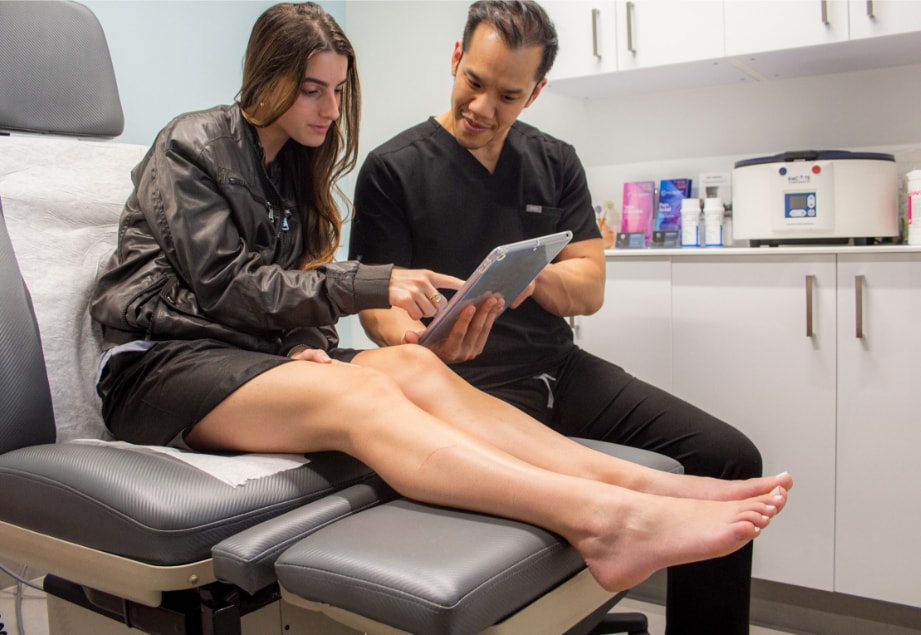
We have state-of-the-art vein centers and vein clinics in New York, New Jersey, California, and Washington, DC. If you’re in or around the DC Metro Area, we encourage you to visit our vein treatment clinic in Bethesda, Maryland. Please schedule an appointment at your nearest vein treatment clinic today.
Common signs and symptoms of vein disease:
- Leg heaviness
- Leg pain
- Leg swelling
- Leg discomfort
- Leg muscle cramps
- Restless leg syndrome
- Arañas vasculares
- Estas venas várices
- Skin discoloration
- Leg ulceration (non-healing wounds on the legs)
- Deep vein thrombosis (blood clots in leg veins)
Chronic venous insufficiency progresses in stages. The initial signs and symptoms of vein disease are fairly mild and benign, often mistaken for signs of aging or exhaustion. But if vein disease is left untreated, the symptoms gradually escalate and lead to numerous long-term complications. In extreme situations, you may also suffer from deep vein thrombosis, which leads to blood clots in veins that can travel to the lungs and cause a pulmonary embolism, which can be fatal. As such, in rare cases, vein disease can be fatal.
If you notice the signs and symptoms mentioned above, please visit your nearest vein treatment clinic in New York, New Jersey, Long Island, California, or Washington DC.
What are the primary risk factors of vein disease?
Chronic venous insufficiency is the primary root cause of varicose veins and spider veins. But who has a higher risk of vein disease, and can you do anything to minimize the risk? The following are some of the primary risks of chronic venous insufficiency.
#1. Genetics
Genetic predisposition is the leading risk factor for vein disease. Some people have genetically weaker vein valves that can malfunction with greater ease, leading to vein disease and varicose veins. If your mom and dad have a history of vein problems, you have a 90% risk of chronic venous insufficiency and vein problems.
#2. Biological Sex
Women have a significantly higher risk of vein disease than men, though both men and women can get spider veins and varicose veins. Women have a higher volume of estrogen and progesterone hormones, which can weaken the vein valves, eventually leading to a higher risk of chronic venous insufficiency.
#3. Pregnancy
Pregnancy dramatically increases the risk of chronic venous insufficiency. When you’re pregnant, your body produces a higher concentration of estrogen and progesterone, increasing the risk of vein disease. Furthermore, the weight of the uterus also applies pressure on the veins, which can collapse the vein valves.
#4. Hormonal Changes
Hormonal changes can increase the risk of vein disease. If you’re taking hormones that increase the production of estrogen and progesterone, your vein valves are more likely to get damaged, leading to chronic venous insufficiency.
#5. Occupation
Certain professions lead to a higher risk of vein disease than others. When you sit or stand for long periods of time, more blood pools in your leg veins, leading to a higher risk of varicose veins. For that reason, vein disease is particularly common amongst nurses, teachers, drivers, pilots, and individuals with desk jobs.
#6. Being Overweight
Being overweight can also increase the pressure on your vein valves, leading to a higher risk of chronic venous insufficiency. Weight management can reduce the risk of vein disease, but only if you also focus on increasing your activity levels and addressing the other potential risk factors for chronic venous insufficiency.
How to prevent varicose veins and vein disease?
There are no definite means of preventing varicose veins and vein disease. You can develop varicose veins for a wide range of risk factors. But you can take certain measures to minimize the risk of vein disease, especially if you fall into one of the categories mentioned above. The following are some of the methods to minimize the risk of vein disease:
- Wear compression stockings regularly to push accumulated blood to the heart.
- Engage in exercises that activate your calf muscles and improve blood circulation, such as swimming, running, cycling, and yoga.
- Don’t sit or stand still for long periods, even if your job is sedentary. Take short breaks every 30 minutes to stretch your legs and walk around.
- Elevate your legs above the heart’s level while sitting down.
- Remain hydrated and drink lots of water.


